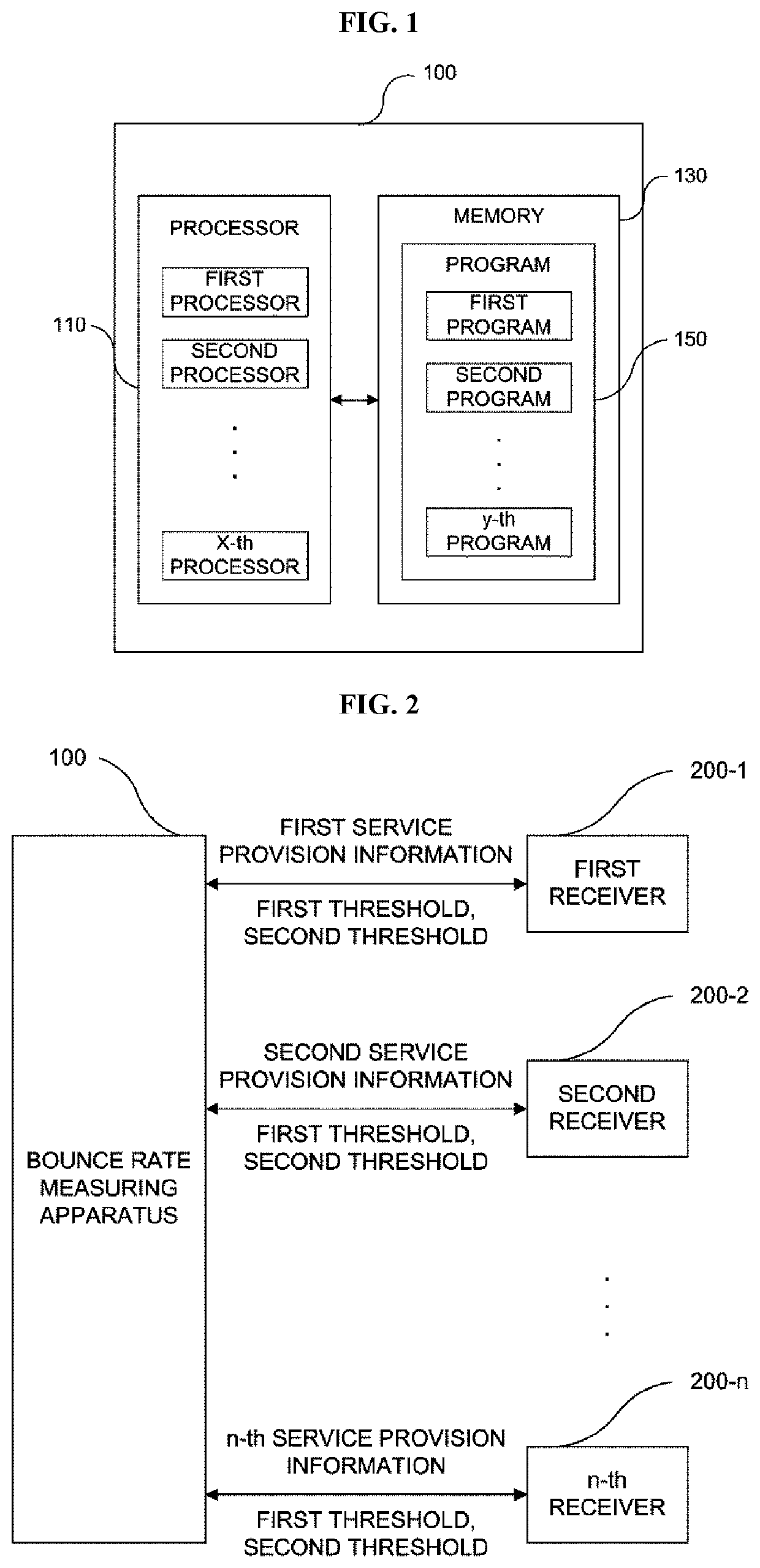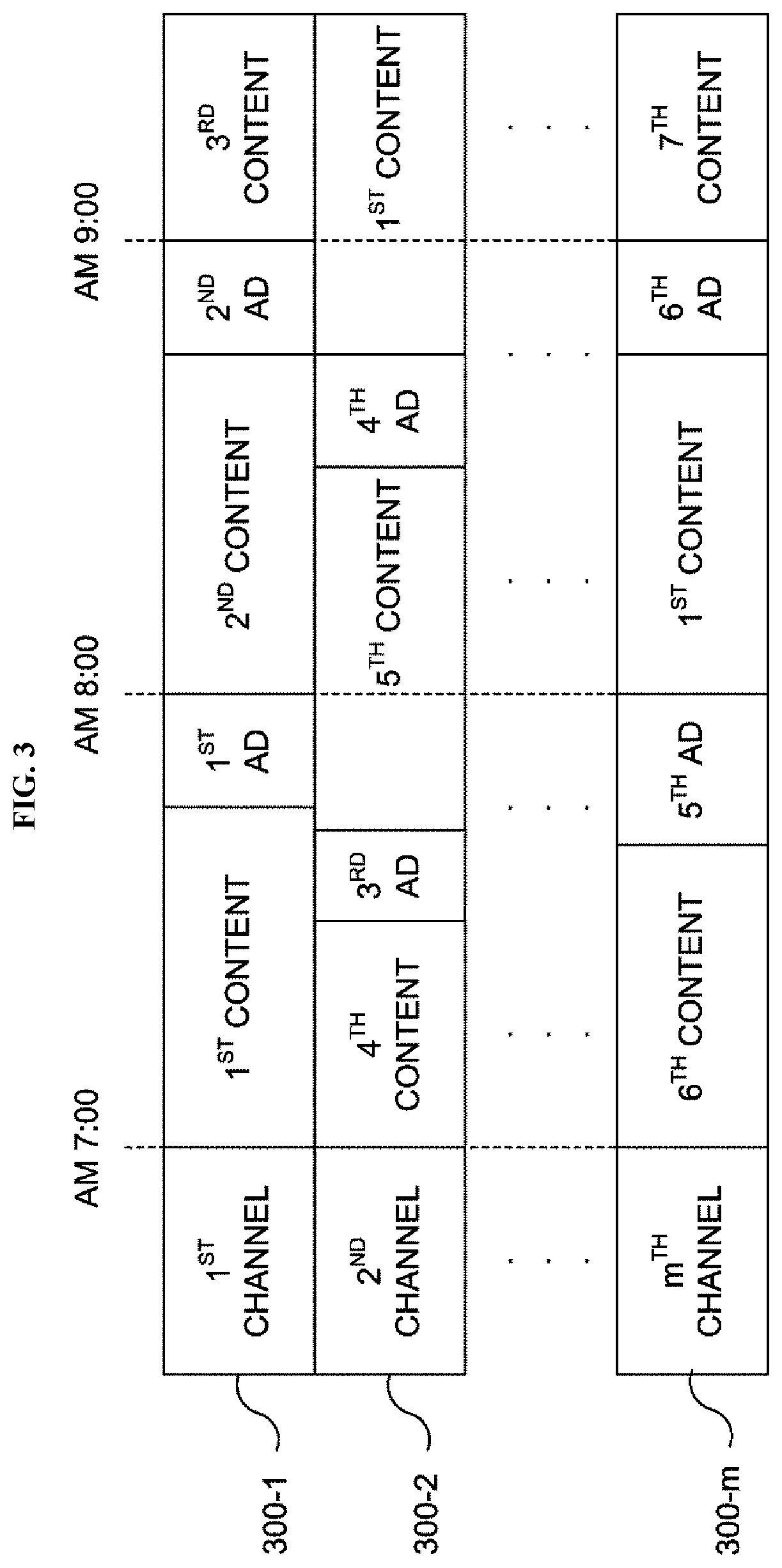Bounce rate measuring apparatus for broadcasting service
- Summary
- Abstract
- Description
- Claims
- Application Information
AI Technical Summary
Benefits of technology
Problems solved by technology
Method used
Image
Examples
first embodiment
[0020]FIG. 1 is a block diagram showing an exemplary configuration of a bounce rate measuring apparatus according to the embodiments described herein.
[0021]Referring to FIG. 1, a bounce rate measuring apparatus 100 according to the embodiments described herein includes one or more processors 110, one or more memories 130, and one or more programs 150 that are stored in the one or more memories 130 and executed by the one or more processors 110. The one or more processors 110 may be implemented by a semiconductor device such as a CPU (Central Processing Unit). The one or more memories 130 may be implemented by a semiconductor device such as a flash memory and a HDD (Hard Disk Drive).
[0022]The one or more processors 110 read and execute the one or more programs 150 stored in the one or more memories 130. In FIG. 1, the number of processors 110 is x where x is a natural number and, thus, there may be one processor 110 or multiple processors 110. In other words, the function of the boun...
second embodiment
[0112]The first embodiment has been described based on the extraction of the bounce rate information of the i-th channel. In other words, it has been described based on an example of extracting the bounce rate information of the i-th channel for the entirety of the first to n-th receivers 200-1 to 200-n.
[0113]However, it is also possible to extract the bounce rate information of the i-th channel only for each receiver.
[0114]Referring back to FIG. 4, the program 150 may further include the fourth instruction 150-4 and the fifth instruction 150-5.
[0115]The fourth instruction 150-4, when executed, analyzes a j-th service provision information (j being a natural number greater than or equal to 1 and smaller than or equal to n) among the first to n-th service provision information to determine a third number of times based on the number of times that each of the one or more channels is provided through a j-th receiver among the first to n-th receivers 200-1 to 200-n for a time period lo...
third embodiment
[0130]The first embodiment has been described based on the extraction of the bounce rate information of the i-th channel. In other words, it has been described based on an example of extracting the bounce rate information of the i-th channel for the entirety of the first to n-th receivers 200-1 to 200-n.
[0131]However, it is also possible to extract the bounce rate information of a specific content provided through each of the one or more channels in each of the first to n-th receivers 200-1 to 200-n.
[0132]Referring back to FIG. 4, the program 150 may further include the sixth instruction 150-6 and the seventh instruction 150-7.
[0133]The sixth instruction 150-6, when executed, analyzes the broadcast schedules of the one or more channels and the first to n-th service provision information to determine a fifth number of times based on the number of times that a predetermined content is provided through each of the one or more channels in each of the first to n-th receivers 200-1 to 2...
PUM
 Login to View More
Login to View More Abstract
Description
Claims
Application Information
 Login to View More
Login to View More - R&D
- Intellectual Property
- Life Sciences
- Materials
- Tech Scout
- Unparalleled Data Quality
- Higher Quality Content
- 60% Fewer Hallucinations
Browse by: Latest US Patents, China's latest patents, Technical Efficacy Thesaurus, Application Domain, Technology Topic, Popular Technical Reports.
© 2025 PatSnap. All rights reserved.Legal|Privacy policy|Modern Slavery Act Transparency Statement|Sitemap|About US| Contact US: help@patsnap.com



